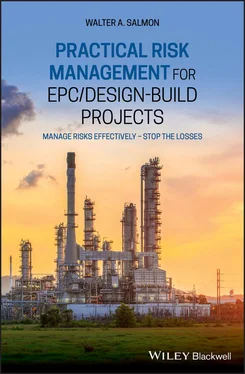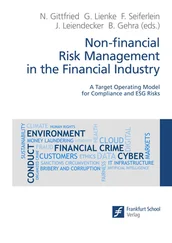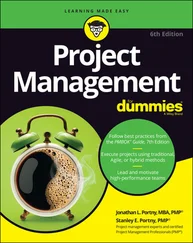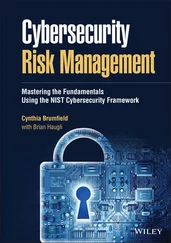1 ...8 9 10 12 13 14 ...19 The choice by the Employer as to which of the above FIDIC-orientated EPC/Design-Build contractual arrangements should be adopted will depend to a great extent on the following factors:
1 what type of organisation the Employer has and, therefore, on just how much (or how little) technical competence sits within the Employer's organisation,
2 how much control the Employer wishes to exercise over the implementation process, and
3 the price the Employer is willing to pay to pass as much as possible of the implementation risks over to the Contractor.
Some Employers prefer to adopt the equivalent of the FIDIC Yellow Book approach for EPC Projects (where an Engineer is appointed separately to represent the Employer). The Yellow Book approach is very often selected where the Employer has a competent in-house workforce to handle the supervision of the implementation activities, especially the on-site work. The alternative approach is to follow more closely the FIDIC Silver Book provisions. This is usually done where the Employer does not have adequate resources to supervise the whole of the implementation work. No separate Engineer is appointed under this alternative approach but, instead, only a representative of the Employer, whose role will be to interface with the EPC contractor (although very often subject to strict limitations of authority). Having said that, the Employer may nonetheless appoint separate companies to monitor either the engineering activities, the procurement activities, the construction activities and/or the commissioning work activities, or any combination of such monitoring activities; there are many possibilities/options available.
2.4.5 General Notes of Interest
Not all EPC Projects will require the Contractor to be responsible for commissioning the facility, and the ‘turnkey’ tag cannot therefore be applied if that situation applies to the Project. This will often occur where the completed facility requires hydrocarbons or special processing materials to be used that have the potential to cause harm if not handled correctly (and where specialists will often be engaged by the Employer to take responsibility for the commissioning work). This has therefore caused the term ‘EPCC’ to arise, where the final ‘C’ refers to ‘Commissioning’, making the whole read ‘Engineering, Procurement, Construction and Commissioning’. However, this is an unnecessary appendage, since the specific requirements for each EPC Project are unique, and the scope of work definitions written into the contractual documentation will usually define the actual work content for the Contractor. In particular, the FIDIC contracts (the Silver and Yellow Books) do not make any references therein to Procurement (nor Engineering, nor Construction), thus any specific requirements for those activities must be separately specified elsewhere in the documents that form the basis of the contractual agreement between the parties. Consequently, if using either of those FIDIC publications, it is therefore sufficient to describe the contract as being for an ‘EPC’ Project, even where the Contractor is not required to undertake the commissioning work. The same reasoning applies to the term ‘EPCI’, where the ‘I’ refers to ‘Installation’ (thus ‘Engineering, Procurement, Construction and Installation’); again, this distinction is unnecessary for the reasons given for not using the term ‘EPCC’. Despite that, I am sure that such variations in the abbreviations used will continue to be employed widely.
In the past, many EPC Contracts were of the reimbursable type, where the Contractor was recompensed in full for all manpower and construction equipment resources used, as well as for all purchases made for the Project. However, those halcyon days for Contractors have generally long-since gone at the time of writing this book and, sadly for Contractors, may not return for many years to come. Nowadays, the tendency is for Employers to insist upon agreeing a lump-sum price with the EPC Contractor for the whole of the Project's implementation. That is an arrangement that almost always benefits the Employer much more than it does the Contractor. This book therefore focuses solely on Projects undertaken on the basis of a lump-sum payment arrangement. In addition, as mentioned in Section 1.1, this book assumes that the EPC Project is to be built in an overseas developing country, since that type of Project is far more difficult to manage than one planned to be built in the Contractor's own backyard.
Much as for the Design-Build approach, the EPC approach has many variants and is a deep subject once you decide to get into exploring its possibilities. Unfortunately however, as late as when I was completing the writing of this book (early 2019), I have to say I still found Wikipedia did not provide suitable reference material about EPC Projects. So much so, that I will not put any direct references to the Wikipedia article here, since I do not wish to waste anybody's time or, worse, for anybody to get confused. Having said that, if a Google search is conducted for the phrase ‘EPC Projects’, you will see that in the order of 18 000 000 references can be found by the search engine. Having myself opened and read in excess of what I thought were the best 200 or so links displayed by Google, I found that there is a lot of inadequate material on the Internet in respect of EPC Projects. Where I found good material, I have made appropriate reference to it in this book.
The ‘EPC’ abbreviation/initialism can also be found in the term ‘EPCM’ (standing for ‘Engineering, Procurement and Construction Management’), in which the key/operative letter that distinguishes this implementation approach is the ‘M’ (Management). However, an EPCM Project is an entirely different type of construction procurement arrangement to that employed for an EPC Project but, because of the occurrence of ‘EPC’ at its start, the term ‘EPCM’ often causes confusion within the global construction industry (as observed by Loots and Henchie). 6
Under the EPCM arrangement, a Management Consultant (which is, more often than not, not a Contractor) will provide the management and coordination services for the whole of the Project on behalf of the Employer. Quite often, but not always, the Management Consultant may also be responsible for carrying out the actual engineering design services. The primary functions of the Management Consultant are to assist the Employer in the procurement process and arrange for others to carry out all the necessary construction work (sometimes engaging multiple Contractors), where the Management Consultant will:
1 organise the procurement work (but not enter into agreements with, nor be responsible for paying, the Vendors and Contractors), and
2 supervise the materials/equipment deliveries and construction work (where the construction Contractors will be also appointed directly by and paid by the Employer, not by the Management Consultant).
The reasons sometimes given for employing an EPCM approach are that it can give the Employer greater control over as many elements of the implementation activities as the Employer is capable of handling (or wishes to have more control over). Such choices may cover the decision as to which concept design is to be followed, or which Engineering Team is to be appointed for the Front-End Engineering Design work and/or the Detailed Design work. Another area where the Employer may wish for greater control is in attempting to keep the procurement and construction costs down (principally by avoiding scope creep, which could otherwise lead to loss of time and also unnecessary increased costs). This greater role in the implementation process would quite obviously not be suitable for all Employers, since it would require a large contingent of people simply to handle the procurement process alone. The pressure on the Employer would be even greater if the Employer took on the added responsibility for carrying out the engineering evaluation review work or the bidding and bid evaluation work that would be necessary before orders for purchasing materials, goods, and equipment could be placed and the construction work packages awarded.
Читать дальше












